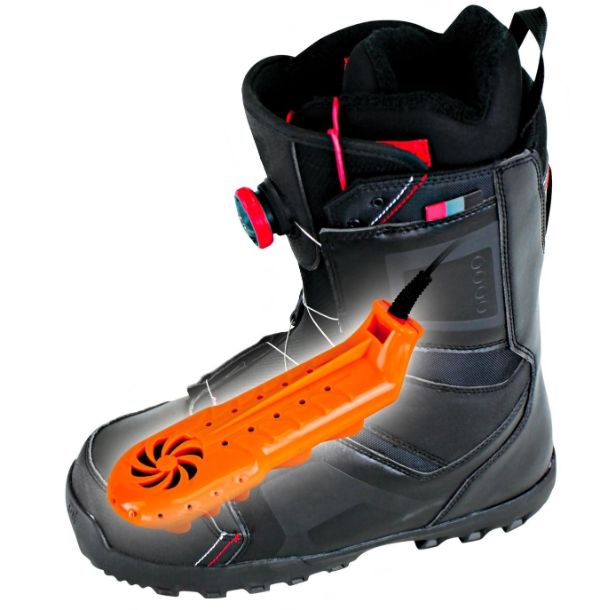When it comes to enjoying winter sports like skiing or snowboarding, keeping your feet warm is crucial for a comfortable and enjoyable experience on the slopes. Ski boot heaters and heated socks are two popular options that provide warmth to combat the chill.
In this article, we’ll explore the differences between ski boot heaters and heated socks, considering their features, benefits, and limitations, to help you make an informed decision and keep your feet cozy during your winter adventures.
Ski Boot Heaters
Ski boot heaters are designed specifically for use inside ski boots. They typically consist of heating elements and a power source, and they can be either built-in or aftermarket additions. Here’s what you need to know about ski boot heaters:
- Heating Elements: Ski boot heaters feature heating elements strategically placed within the boot to radiate warmth to your feet. These heating elements are usually powered by rechargeable batteries or disposable heat packs.
- Customizable Heat Levels: Ski boot heaters often provide adjustable heat settings, allowing you to customize the warmth based on your preference and the weather conditions. Some models come with remote controls or smartphone apps for convenient heat adjustment.
- Targeted Warmth: Ski boot heaters deliver heat directly to your feet, providing localized warmth in the boot. This targeted heat helps keep your toes and the soles of your feet cozy, even in freezing temperatures.
- Battery Life: The battery life of ski boot heaters varies depending on the brand, model, and heat intensity setting. Higher heat settings typically consume more power and result in shorter battery life. It’s essential to consider the duration of your skiing sessions and ensure the batteries can last throughout your desired timeframe.
Heated Socks
Heated socks are designed as standalone garments that you wear inside your ski boots. They incorporate heating elements within the fabric to provide warmth and insulation. Here’s what you need to know about heated socks:
- Heating Technology: Heated socks feature heating elements woven into the fabric, often near the toes and soles. These elements are powered by rechargeable batteries located in small pockets on the socks.
- Flexibility and Versatility: Heated socks can be used in various footwear beyond ski boots. They are suitable for winter sports, outdoor activities, or even for everyday use during cold weather. This flexibility allows you to enjoy warmth in different situations.
- Battery Life: Similar to ski boot heaters, the battery life of heated socks depends on factors such as heat intensity settings and the brand/model. It’s essential to consider the duration of your activities and ensure the batteries can sustain warmth for your desired timeframe.
- Even Heat Distribution: Heated socks distribute heat more evenly across the entire foot, including the toes, arches, and ankles. This comprehensive warmth helps prevent cold spots and promotes overall comfort during your outdoor adventures.
Factors to Consider
To determine which option is best for you, consider the following factors:
- Intensity of Warmth: If you have particularly cold feet or often ski in extremely frigid conditions, ski boot heaters may provide more intense and localized warmth. On the other hand, if you prefer consistent warmth throughout your foot or if you engage in various outdoor activities, heated socks may be a better choice.
- Flexibility and Mobility: Heated socks offer the advantage of being removable, allowing you to wear them with different types of footwear. If you participate in activities beyond skiing, such as hiking or snowshoeing, heated socks provide versatility and can be used across multiple sports.
- Cost and Investment: Ski boot heaters are often more expensive initially since they are specifically designed for ski boots. Heated socks, while still an investment, can be used in a wider range of situations, potentially making them a more cost-effective option.
- Comfort and Fit: Both ski boot heaters and heated socks come in various sizes, so it’s important to choose the option that provides a snug and comfortable fit inside your ski boots. Ensure that the chosen option doesn’t restrict circulation or create discomfort.
—
When it comes to keeping your feet warm during winter sports activities like skiing, both ski boot heaters and heated socks offer viable options. Ski boot heaters provide intense and localized warmth directly within your ski boots, while heated socks offer flexibility, mobility, and even heat distribution across the entire foot.
Consider factors such as intensity of warmth, versatility, cost, and comfort to make the best choice for your needs. Whichever option you choose, the warmth they provide will help you enjoy your time on the slopes without discomfort or cold feet, enhancing your winter sports experience.

For over 12 years, I have been testing and reviewing heating technologies that overcome cold weather conditions. In recent years, I have specialized in the heated apparel. I’ve made it my mission to educate people about heated clothing.

